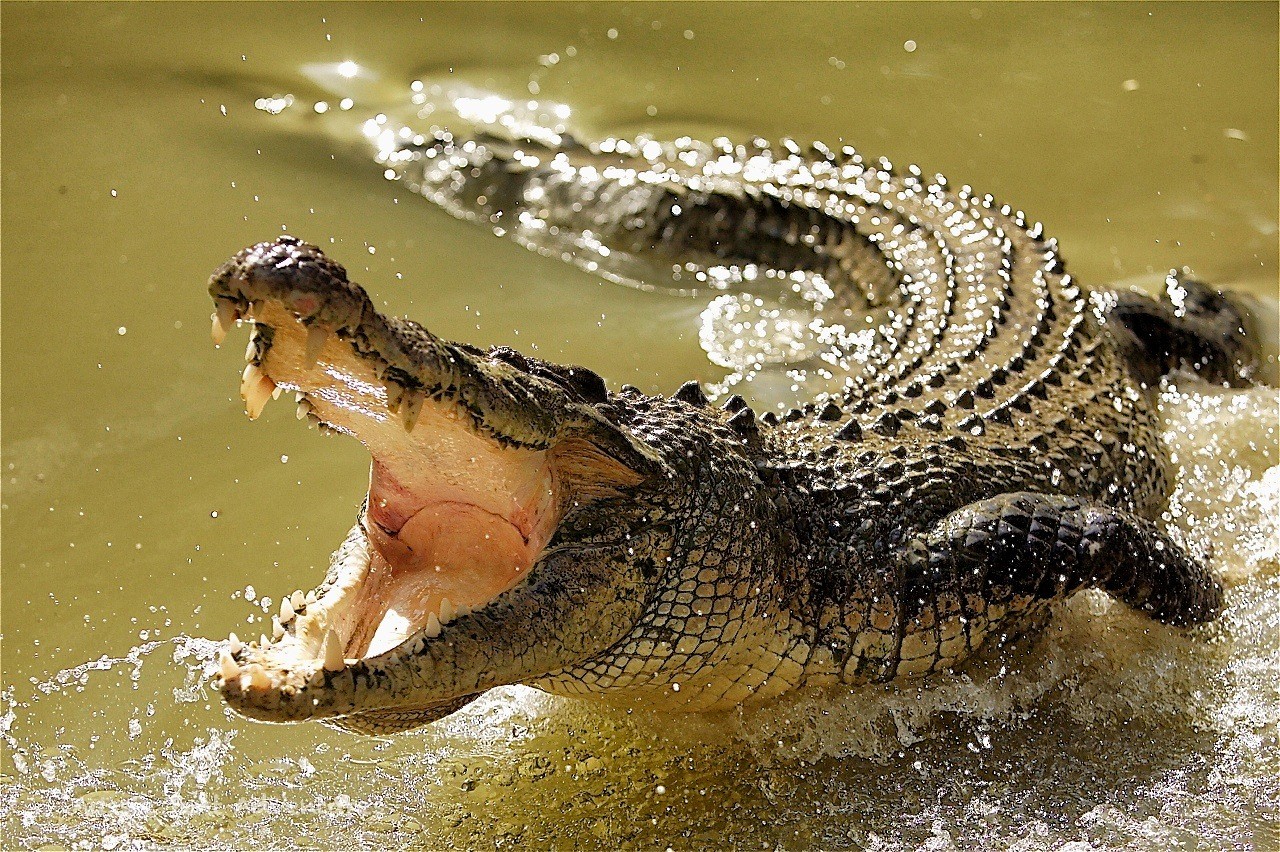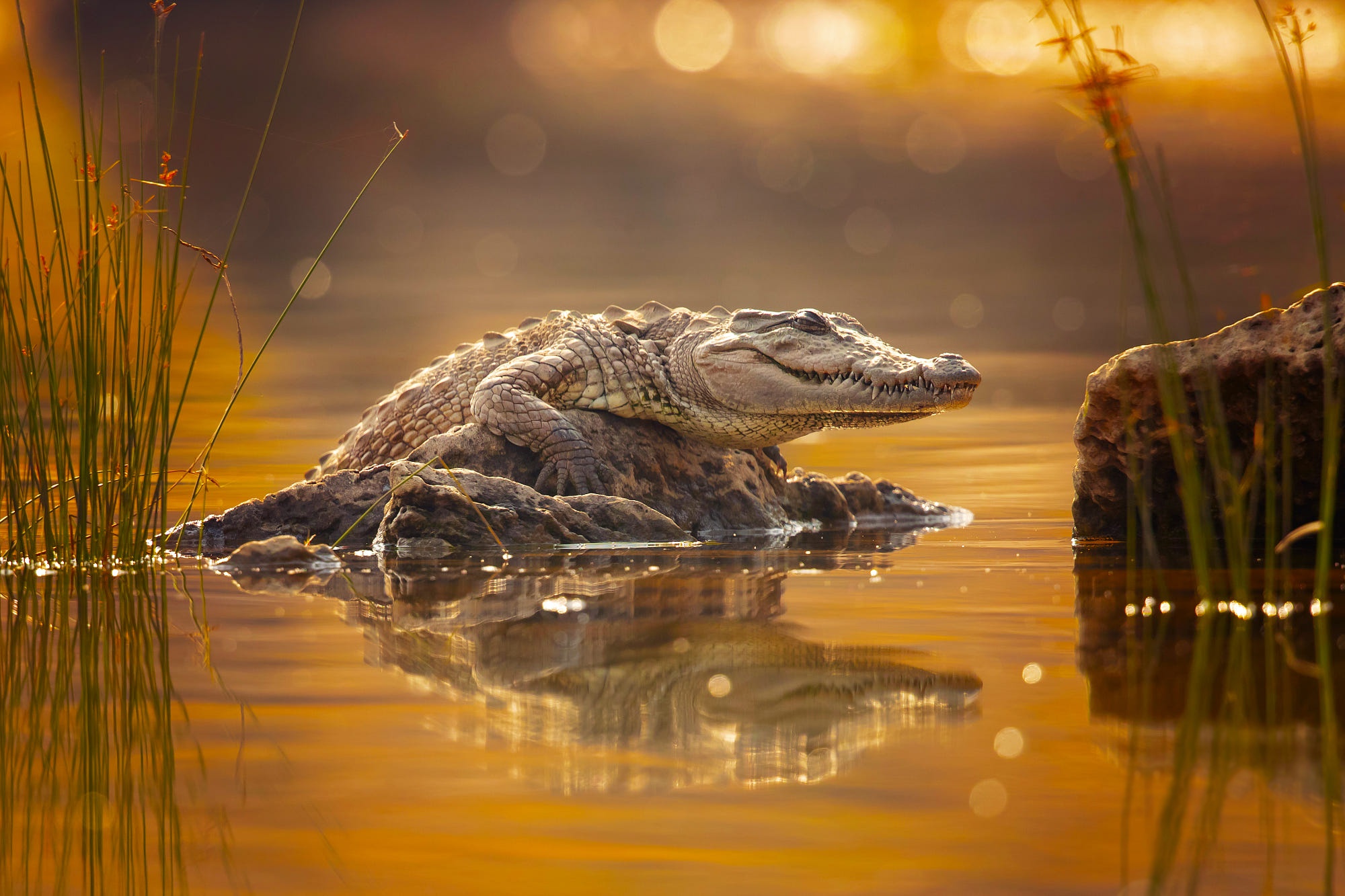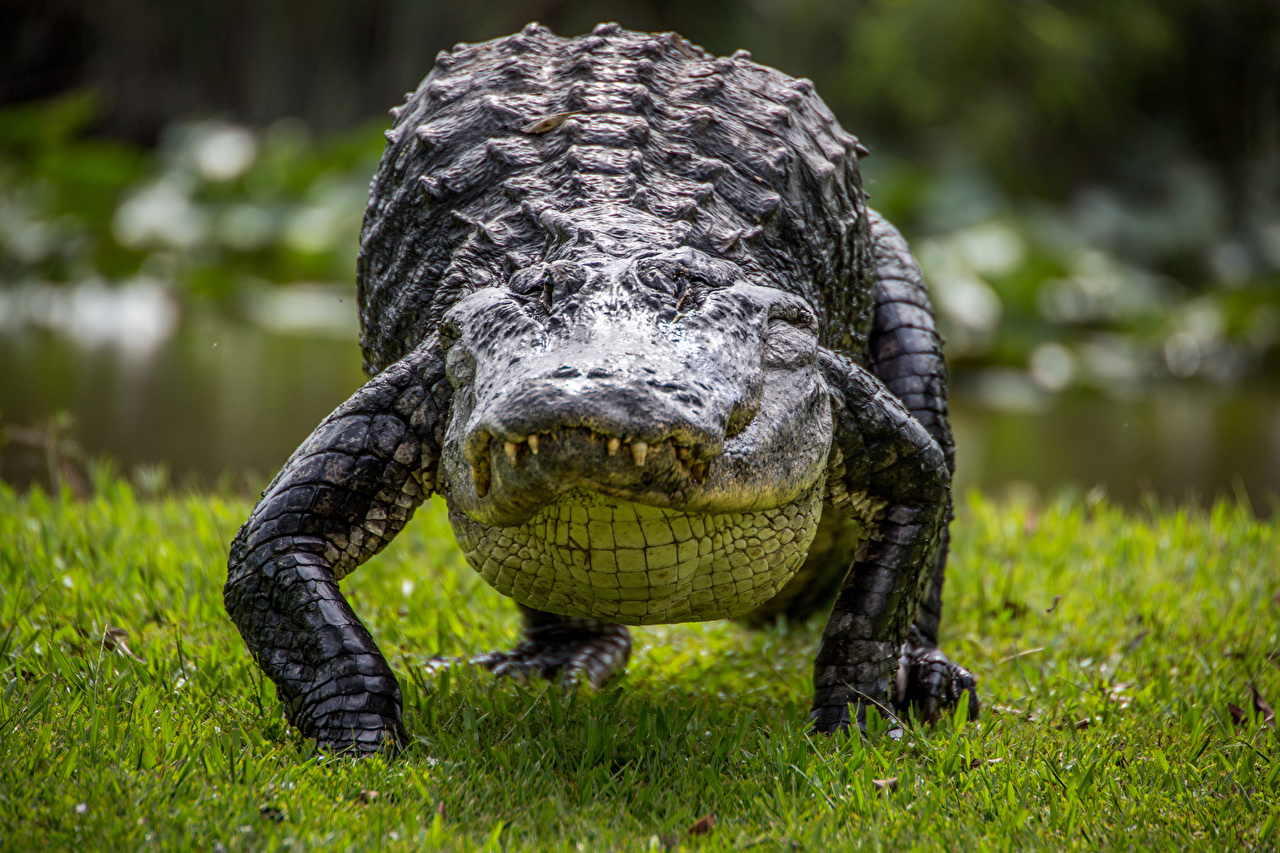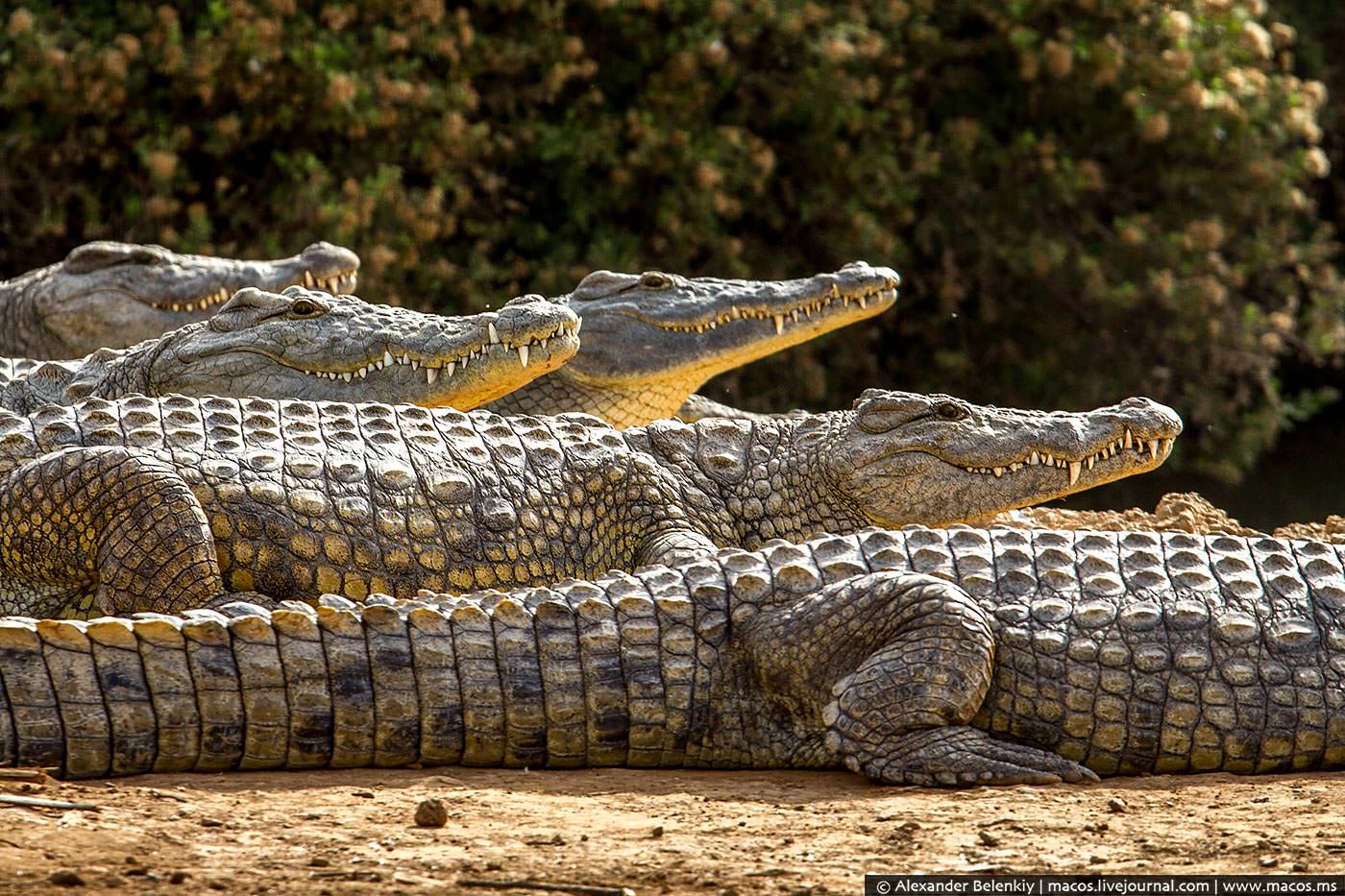
Crocodiles are large aquatic reptiles found primarily in tropical regions of Africa, Asia, the Americas, and Australia. Here are some key characteristics and descriptions of crocodiles:
### Physical Characteristics
1. **Size and Weight**:
– Crocodiles can vary significantly in size. The smallest, the dwarf crocodile, grows to about 1.5 meters (5 feet), while the largest, the saltwater crocodile, can exceed 7 meters (23 feet) in length and weigh over 1,000 kg (2,200 lbs).

2. **Body Structure**:
– Crocodiles have elongated, V-shaped snouts, robust bodies covered in tough, scaled skin, and powerful tails used for swimming.
– They have short legs with webbed feet, aiding their ability to swim efficiently.
3. **Teeth and Jaw**:
– Their jaws are extremely powerful, filled with sharp, conical teeth designed for gripping and tearing flesh.
– Crocodiles have a distinctive overbite, where the upper teeth are visible when the mouth is closed.

### Habitat
– Crocodiles inhabit a variety of freshwater environments, including rivers, lakes, wetlands, and sometimes brackish water and coastal saltwater regions.
– They are often found in regions with a warm climate, as they are ectothermic (cold-blooded) and rely on external heat sources to regulate their body temperature.

### Behavior
1. **Diet**:
– Crocodiles are carnivorous and have a diet that includes fish, birds, mammals, and occasionally other reptiles. They are known for their ambush hunting techniques, waiting patiently for prey to come close before striking.
2. **Reproduction**:
– Crocodiles lay eggs in nests made from mud and vegetation. Female crocodiles exhibit strong parental care, guarding the nests and sometimes helping hatchlings reach the water.

3. **Social Structure**:
– While some crocodile species are solitary, others may be more social, living in groups during certain times of the year, such as during the mating season.
### Unique Adaptations
– **Sensory Organs**: Crocodiles have highly developed senses, including acute hearing and eyesight. They have sensory pits on their jaws that detect vibrations and changes in water pressure.
– **Dermal Pressure Receptors**: These specialized receptors help crocodiles detect prey and navigate their aquatic environments.
– **Temperature Regulation**: Crocodiles bask in the sun to warm up and stay in the water to cool down. They can also open their mouths to release heat, a behavior known as “mouth gaping.”

### Conservation Status
– Many crocodile species are threatened or endangered due to habitat destruction, illegal hunting, and pollution. Conservation efforts are in place to protect these ancient reptiles, which have remained relatively unchanged for millions of years.
